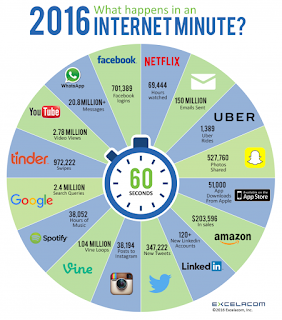As our team
prepares to attend Intuit’s QuickBooks Connect, yet another valuable trade show on the B2BGateway yearly calendar, we
get an email from the organizers, Intuit, encouraging our team to use the
#qbconnect in all our correspondence and social media postings. As a marketer I
am very au fait with the use of hashtags in our messaging, but Intuit’s recent
show correspondence got me thinking. What exactly has the simple hashtag symbol
# become and how has it influenced modern communications?
The hashtag
or sometimes called the pound sign in North America was often used in
information technology to highlight a special meaning. In 1970 the pound sign
was used to denote immediate address mode in the assembly language of
the PDP-11 when placed next to a symbol or a number.
The pound
sign then appeared and was used within IRC networks (internet relay chat) to
label groups and topics. Channels or topics that are available across an entire
IRC network are prefixed with a hash symbol. The use of the pound sign in IRC
inspired Chris Messina to propose a similar system to be used on Twitter to tag
topics of interest on the microblogging network. He posted the first hashtag on
Twitter in 2007:
How do you feel about using #
(pound) for groups. As in #barcamp [msg]?
It was after a series of forest fires in San Diego in 2007 that the use
of the hashtag in Twitter first, and then other social media platforms, became
popular. According to Messin
the intention behind the hashtag was to make it easy for users to search
for content and find specific updates that are relevant without the
technological knowledge to navigate the site. Therefore, the hashtag “was created
organically by Twitter users as a way to categorize messages. In the world of
the Super Information Highway, where all this happens in an internet minute,
that
Marketers, communication specialists and organizations with a specific message,
needed a tool to be seen, heard or at least somewhat searchable over all the
noise created. Hence the simple hashtag has become one of the 21st
centuries most important communication or PR symbols. Simply by pacing the #
symbol in place of a word or key phrase, the author can highlight the key
points of his or her communication. Likewise the reader can use the # symbol
for research and up to date feeds on any particular topic that may be of
interest.
On social
networking sites such as Twitter, Instagram, Facebook, Google+, etc., hashtags
can be inserted anywhere within a sentence, either preceding it, following it
as a postscript, or being included as a word within the sentence, example
(sorry for shameless plug) – ‘B2BGateway #EDI for QuickBooks’.
The quantity
of hashtags used in a post or tweet is just as important as the types of
hashtags used. It is currently considered acceptable to tag a post once when
contributing to a specific conversation. Two hashtags are considered acceptable
when adding a location to the conversation. Three hashtags are seen by some as
the ‘absolute maximum’, and any contribution exceeding this risks raising the
ire of other users.
So, besides
search-ability, what additional benefits does the hashtag offer the 21st
century marketer and PR guru?
·
Improve brand
awareness by using hashtags related to service or product.
·
Use trending
hashtags where relevant to drive additional traffic to your site.
·
Encourage
interaction with customers, prospects and partners.
·
Create a
brand hashtag that is unique to your business and use as a signature tag.
·
Unique
hashtags are ideal for new campaign or product launches.



Thanks..
ReplyDeleteMutlak Butlan
Hukuk